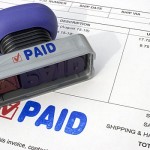 There were two big announcements in September that seemingly added to the dour outlook for banks: Apple Pay and Walmart’s Checking Accounts. But, despite previous headlines about new financial service products and services putting an end to banks, the prospect that banks are to become obsolete will not come true–at least not in the near future. The outlook instead seems that the bigger fish will continue to play a big part in everyone’s everyday financial doings.
There were two big announcements in September that seemingly added to the dour outlook for banks: Apple Pay and Walmart’s Checking Accounts. But, despite previous headlines about new financial service products and services putting an end to banks, the prospect that banks are to become obsolete will not come true–at least not in the near future. The outlook instead seems that the bigger fish will continue to play a big part in everyone’s everyday financial doings.
For example, Apple Pay has teamed up with some big players: AmEx, BofA, Wells, Chase. Bank of America and Wells Fargo can tout they are providing easier access for its customers, without having to reinvent the wheel themselves. A win-win for big banks.
A prepaid card leader, Green Dot, made a huge splash last week with the announcement of another partnership with Walmart–checking accounts. Walmart ditched their efforts to become bankers bank in 2007. Instead, they brought on the Walmart Money Card and American Express’ Bluebird, offer the ability to quickly reload a variety of prepaid cards with Rapid Reload, check cashing, bill pay, money orders–giving their customers the ability to take care of all their banking needs in-store–without holding a bank charter themselves. Another win for this big-box retailer, and a growing leader in “alternative” banking.




